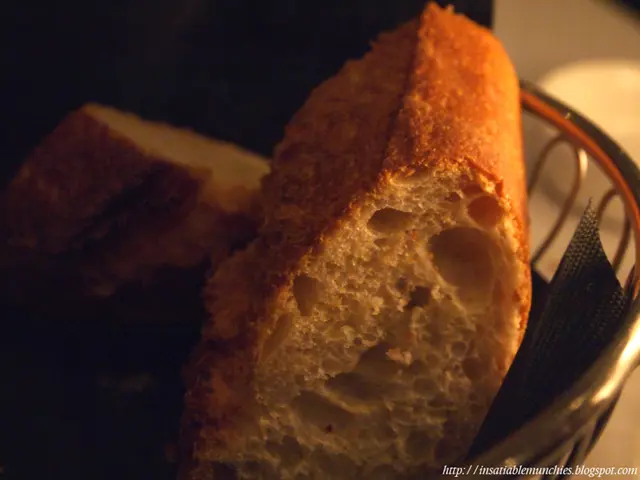10 Remarkable Species Thriving Away from the Spotlight: Sunlight Not Required
Liven Up Your Shady Sanctuary with These Superstar Plants
Who said a gloomy home meant a dull living space? Even the dimmest nooks can beam with vibrant greenery and fresh air. These ten extraordinary plants flourish marvelously in low-light conditions, proving that a sunny window isn't the only key to a lush indoor garden.
Snake Plant
Resilient and striking, the Snake Plant, or Sansevieria, practically defies destruction, making it perfect for novice plant enthusiasts. With its tall, sword-like leaves adorned with yellow or white edges, the Snake Plant adds a bold architectural element to any room.
These plants thrive in even the dingiest corners, making them purrfect bedroom companions. They convert carbon dioxide into oxygen at night, providing cleaner air while you snooze. Filtering out common air pollutants like formaldehyde and benzene, the Snake Plant will ensure you breathe easier during the day too.
Snake Plant Care Tips
Watering may be where most Snake Plant parents stumble – but fear not! These drought-tolerant wonders prefer dry soil between waterings. During winter months, you might only need a splash once a month. Avoid overwatering, as it can lead to nasty root rot. A standard cactus or succulent soil mix does the trick. Snake plants also appreciate a little neglect; they'll reward your benign neglect with years of lush, upright foliage.
ZZ Plant
The ZZ Plant has rocketed in popularity, thanks to its glossy, dark green leaves arranged on arching stems. Native to drought-prone Eastern Africa, this resilient plant has evolved to survive extended periods without water.
Its thick rhizomes store moisture, enabling it to dwell in conditions that would kill off most houseplants. Apart from occasional watering, the ZZ Plant is virtually maintenance-free. Just keep it away from drafty windows during winter, and it'll be content.
Peace Lily
Elegant and unpretentious, the Peace Lily brings an air of refinement to dim environments with its glossy dark green leaves and distinctive white "flowers" (which are not actual flowers but modified leaves called spathes).
These hardy tropical beauties excel in shade, bringing a touch of sophistication to any room. Unbeknownst to many, Peace Lilies are exceptional air purifiers, reliably removing common household toxins, including benzene, formaldehyde, and trichloroethylene. This makes them especially valuable in newly renovated spaces or homes with numerous synthetic materials.
Understanding Peace Lily Blooms
Peace Lily blooms are not real flowers but lovely, showy spathes that enclose tiny flowers on the spadix. The white blooms typically appear in spring, but they can burst forth sporadically throughout the year when the plant is pleased. Lower light equates to fewer blooms, but the lush foliage remains stunning year-round.
Peace Lilies communicate their needs clearly, making them ideal for novice green thumbs. Their leaves droop dramatically when they're thirsty and perk up swiftly after watering. This visual cue helps avert both under and overwatering. Remember, however, that these plants are toxic to pets, so keep them away from curious cats and dogs.
Pothos
Fondly known as "devil's ivy," Pothos plants are nearly impossible to kill. Their heart-shaped leaves cascade beautifully from shelves or hanging planters, creating a mesmerizing waterfall effect of greenery.
With their heart-shaped leaves, they complement any decor style. A famous air-purifying powerhouse, Pothos efficiently removes formaldehyde, benzene, and carbon monoxide from indoor air. It's especially adept at processing VOCs released by common household products due to its quick growth rate.
Pothos Versatility
Few plants boast the adaptability of Pothos. They excel at trailing from hanging baskets, climbing moss poles, or spreading across bookcases. Their leafy foliage adds tranquility to your living spaces regardless of the lighting conditions.
Philodendron
Philodendrons bring tropical vibes indoors with their diverse leaf shapes and rich grow patterns. Despite their exotic appearance, philodendrons are practically unkillable, thriving on neglect.
These versatile plants develop their foliage based on their light environment - producing smaller leaves in dim settings and larger ones when sufficient light is available. This clever strategy ensures their survival in virtually any indoor setting.
There are several philodendron varieties that excel in low light, including the Brasil, Moonlight, and Imperial Red. New to the plant game? Philodendrons are the learning curve you need.
Philodendron Varieties for Shade
Beyond the common heart-leaf philodendron, there are several shade-loving philodendron types that can elevate your indoor oasis.
- The Brasil Philodendron features bright green, striped leaves that radiate in dim spaces.
- The Moonlight Philodendron boasts lustrous chartreuse foliage that seems to glow in low light.
- The Imperial Red unfurls dramatic burgundy-tinted leaves that add color without excessive light.
These shade-tolerant philodendrons are easy to care for. Yellow leaves usually indicate overwatering, while brown tips point to insufficient humidity. Swiftly remedy these issues, and philodendrons will bounce back in no time.
Spider Plant
The spidery grace of Spider Plants adorns any dim corner with their arching grass-like foliage and dangling offspring. The versatile, striped variety brings brightness even without sunlight, while the solid green type tolerates deeper shade.
This resilient plant thrives ever since its Victorian era fame, thanks to its remarkable adaptability. Spider plants recover quickly from neglect, and they're also non-toxic to pets.
Spider Plant Propagation
One of Spider Plant's most appealing qualities is its simple propagation process. The small plantlets that form on long stems (or "spiderettes") can be snipped off and placed directly in soil to create new plants.
Not only are these plants easy to propagate, but they're also effective air-purifying machines, targeting common indoor pollutants like formaldehyde, xylene, and toluene. Spider plants are particularly helpful in kitchens, where they combat odors and reduce pollutants from cooking and gas stoves.
Chinese Evergreen
Aglaonema, or Chinese Evergreen, brings pops of color to dim spaces with its vibrant green, red, and creamy leaves. These leafy orbs arranged in rosette patterns brighten corners even in maximum shade.
Cultivated in Asia for centuries, Chinese Evergreens are symbols of good fortune and prosperity. They're remarkably durable, thriving with minimal care. With proper nurturing, these plants can become valuable heirlooms.
Chinese Evergreen Color Varieties
The Chinese Evergreen variety spectrum is astounding. The Silver Bay boasts a silver-green hue with cream edges, while the Red Aglaonema flaunts stunning pink or red variegation, even in deep shade. The Emerald Beauty maintains deep green coloration that appears striking even in dim corners.
Chinese Evergreens grow slowly, especially in low light, requiring limited repotting. Their petite size makes them suitable for small spaces like coffee tables or mantels. A Chinese Evergreen prefers warm, humid environments, such as bathrooms or kitchens with showers or cooking steam.
Cast Iron Plant
The Cast Iron Plant earns its name by being unbreakably sturdy. Its dark green, fountain-like leaves reach up to two feet, showing off their resilience. Originating from Japan's forest understory, this plant is designed to thrive in scarcely lit conditions.
The Cast Iron Plant flourishes in deep shade, irregular watering, and temperature fluctuations. It slowly grows over time, eventually forming large clumps that can be handed down as heirlooms.
Cast Iron Plant Maintenance
Cast Iron Plants have laissez-faire maintenance needs. They prefer dry soil between waterings and often suffer from overwatering more than underwatering. Fertilize them occasionally with diluted houseplant food.
Comprised of a thick root system, these plants can weather drought conditions easily. Flowers rarely appear, but when they do, they pop up as curious, purple-brown blooms low to the soil. The variegated variety boasts cream stripes and yields the same legendary robustness as the solid green type.
Parlor Palm
Parlor Palms, with their feathery fronds and delicate appearance, grace low-light spaces with tropical elegance. Despite their refined look, these palms are surprisingly tough, tolerating even the dimmest lighting.
Their petite 2-to-4-foot stature makes them perfect for smaller rooms and apartments. These plants have a rich history as Victorian parlor decorations, fitting Morse code messages behind their graceful fronds.
Their adaptability to low light is a testament to their enduring popularity. Contemporary environments may offer more light compared to the dimly lit, coal-heated homes of yore, but Parlor Palms are blissfully unfazed.
Parlor Palm Growth Patterns
Parlor Palms grow distinctly differently from many houseplants, developing in clusters rather than a single trunk. This results in a full, bushy appearance, even in young plants.
They grow slowly in low light, meaning they won't outgrow their limited space or necessitate frequent repotting. These palms remove VOCs like xylene and toluene from the air, thanks to their finely textured fronds with maximum surface area for filtration.
They tolerate typical indoor humidity levels without complaint but appreciate occasional misting in dryer climates.
- Incorporating indoor plants into your lifestyle can liven up any space, even the shadiest corners, with the Snake Plant being one of the most resilient options.
- For fashion-and-beauty enthusiasts, the Peace Lily brings an air of sophistication to any room, while the Pothos' heart-shaped leaves complement any decor style.
- Pets and home-and-garden lovers may find interest in the Chinese Evergreen, a plant that boasts vibrant green, red, and creamy leaves, and the Spider Plant, which is non-toxic to pets.
- Travelers and globetrotters can appreciate the Cast Iron Plant's ability to thrive in scarcely lit conditions, reminiscent of forest understory environments.
- Shopping for food-and-drink may lead to discovering that certain plants, like the Pothos and Spider plant, can efficiently remove common household toxins, including benzene and formaldehyde, from indoor air.








